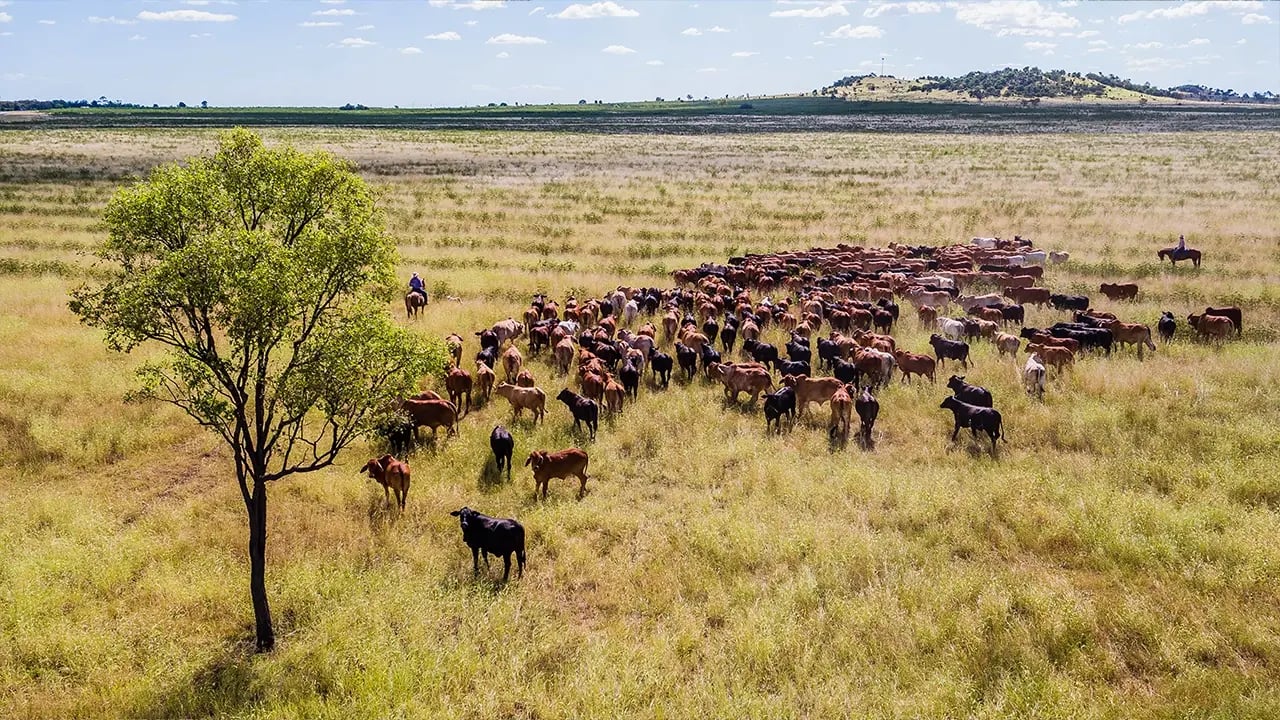There’s an old saying that farmers are married to the weather. But are prices?
El Nino and La Nina are thought to be reflected in Australia’s primary cattle livestock indicator – the Eastern Young Cattle Indicator (EYCI).
In the past 15 years, the EYCI has averaged 506c/kg in periods outside of El Nino and La Nina. During El Nino events it was 32c/kg lower and during La Nina events it was 168c/kg higher.
Key Points
The EYCI has average 506c/kg in periods outside of El Nino and La Nina in the past 15 years
During El Nino events the EYCI was 32c/kg lower
During La Nina events it was 168c/kgh higher

Source: MLA, BOM
However, the current reaction of the EYCI to El Nino appears a bit unsure of itself. After the Bureau of Meteorology (BOM) officially declared El Nino on September 19, the EYCI fell to record lows in mid-October, then rallied in November before softening towards Christmas.
At a more granular level, November and December were particularly volatile.
Connecting with communities across regional and rural Australia
Source: MLA, BOM
The net effect is that at the end of December the EYCI was 14% higher than the day El Nino was declared.
The market’s reaction to El Nino may be explained by three separate influences. Firstly, El Nino was well anticipated prior to being officially declared. Secondly, market confidence has improved following rain and more optimistic weather outlooks. Thirdly, influences other than the weather have weighed on cattle prices during 2023.
The impact of El Nino may have been priced into the EYCI in the months before the official declaration. An El Nino Watch and El Nino Alert were circulated by the BOM in March and June 2023. Several key climate drivers were also moving in the direction of El Nino from early 2023.

Source: MLA, BOM
The above graph shows the NINO3.4 SST and EYCI as monthly averages from 2013. NINO3.4 SST measures anomalies in the sea surface temperature (SST) for a region in the Pacific. It is one of the climate drivers used by BOM in their determination of El Nino and La Nina events. Sustained periods where the SST value is >0.8°C than average are associated with El Nino and periods where the SST is <-0.8°C than average are associated with a La Nina Event.
Indicators such as these, alongside extensive media coverage, may have caused producers to change their buying and selling behaviour in anticipation of an El Nino, contributing to the sustained price declines witnessed up to October 2023. Meat and Livestock Australia (MLA) has reported that the widespread discussion and media scrutiny regarding the El Nino in the six months prior to the September announcement “manifested negative sentiment within the market”, weakening demand and increasing supply to the detriment of prices.

Did the BOM get it wrong on the hot, dry summer?
What happened the scorching El Nino summer we were bracing for? Why has the east coast of Australia been drenched while the north and west gets the heat?
Furthermore, perhaps the short turnaround between the La Nina event and El Nino event also exacerbated fears of dry conditions in the future. Typically, a period of 15 months occurs between these two events, based off historical observations between 1980 and 2023. This time around, only six months separated La Nina and El Nino in 2023.
The absence of a normal neutral period may have forced producers to make destocking decisions more suddenly than otherwise, especially if their herd size was larger than normal following a few good years. Monthly national cattle yardings were generally elevated in 2023 compared to 2022, averaging 36,843 more head. In Q2 and Q3 the Female Slaughter Ratio increased to 48% and 49%, surpassing the 47% threshold indicating a herd liquidation phase.
 Source: MLA
Source: MLA
The price rise after the official declaration represents a correction to the market consensus on the severity of the El Nino. Sentiment has improved following the unexpected rainfall in November, which was ~38% above the 1961-1990 November national average and missed by most weather predictions.
ANZ Agri INFOCUS reported the recent EYCI rally may signal some restored market confidence following recent rainfall and producer sentiment that the El Nino will be less severe. Indeed, the El Nino may be shorter and less dry. The BOM expects the current El Nino to last until early autumn 2024 before moving to a neutral outlook. The Southern Oscillation Index (SOI) has already weakened in recent weeks to values outside those typically associated with El Nino.
Restored market confidence may have reversed the destocking phase that helped propel prices downward. Rabobank Senior Analyst Angus Gidley-Baird noted how the November rain gave farmers the opportunity to hold or possibly buy cattle. The resulting fall in supply was thought to support the price rises in restocker indices during November.
Naturally, factors other than the weather influence livestock prices. These should not be discounted when analysing the price movements in 2023.
Constrained processor capacity has dampened demand in a market with surplus supply. Interest rates also moved unfavorably in 2023. Consumer demand remains relatively soft. Combined, these factors contributed to the price decline and recovery we have seen throughout 2023.
The forecast El Nino, which led farmers to expect dry conditions, has not matched the actual conditions experienced to date. These expectations contributed to the decline of most livestock indicators before November rain and improving market confidence helped restore prices. Notwithstanding, the pull and push of other factors have also influenced prices and El Nino should not be blamed entirely for the lows experienced in 2023.
Matt Dalgleish is a director of Episode3.net and co-host of the Agwatchers podcast.
Lorem Ipsum is simply dummy text of the printing and typesetting industry. Lorem Ipsum has been the industry's standard dummy text ever since the 1500s
Subscribe to our weekly newsletter and monthly cattle, sheep, and machinery round-ups.